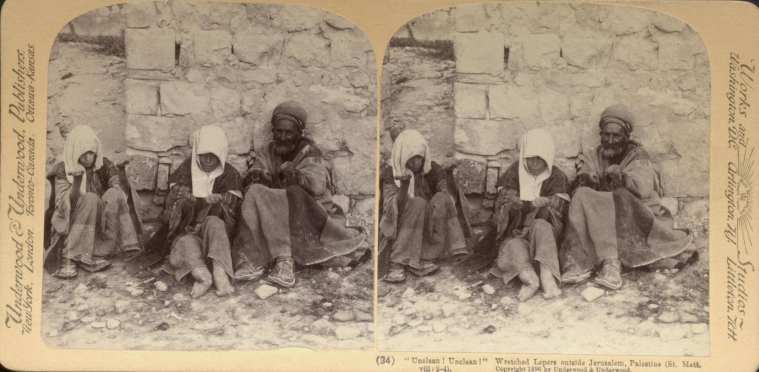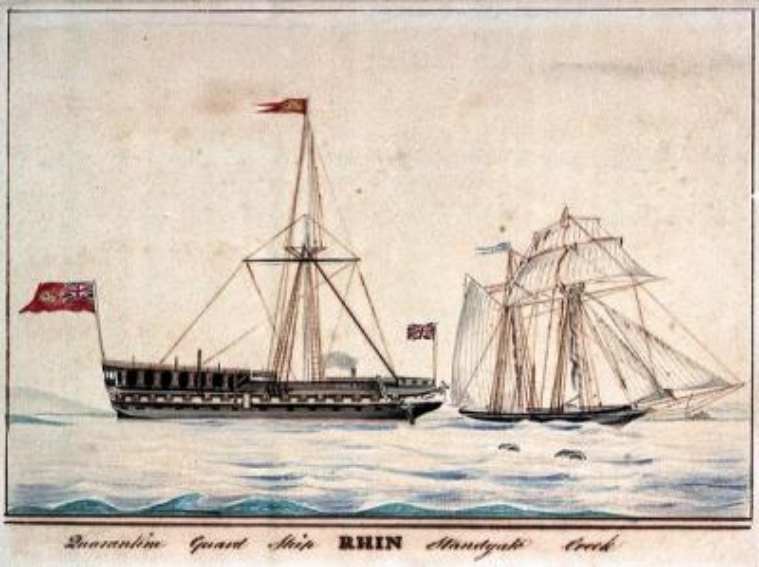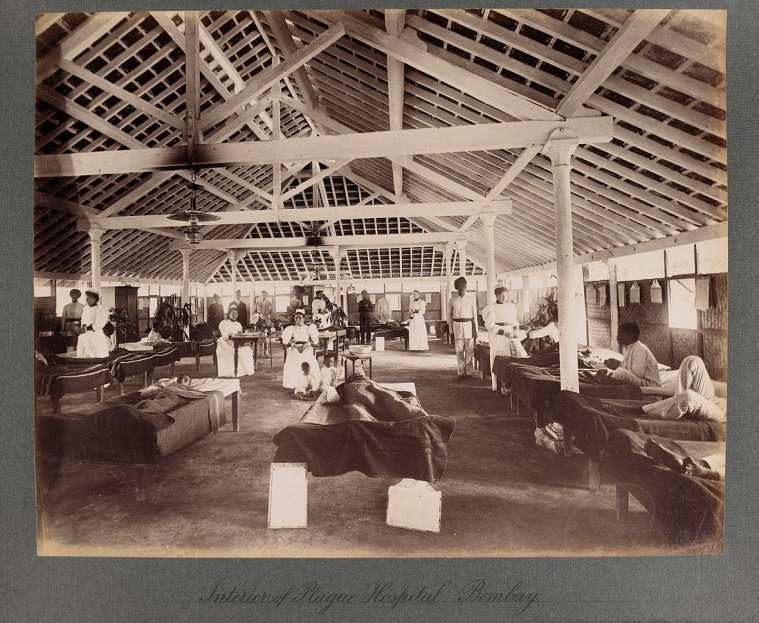In 1801, when Napoleon Bonaparte was returning with soldiers after his unsuccessful invasion of Egypt, the members of Marseille’s health board had made elaborate arrangements for the quarantine of the troops in a bid to prevent the spread of plague. However, when the enthusiastic crowd that had gathered to welcome Napoleon caught a glimpse of him, what followed was perhaps one of the earliest incidents of a mass flouting of quarantine laws in recorded history — people dragged the Corsican general to the shore while saying they were willing to suffer the consequences. They were chanting “we prefer the plague to the Austrians”, a reference to Napoleon’s victories in 1797.
Significant repercussions followed. Marseille’s health authorities demanded that the Directory (France’s national government from 1795 to 1799) take instant disciplinary action on the sanitary authorities of Ajaccio and Fréjus for apparently allowing the flouting of norms. The Directory responded by expressing regret and assuring that transgressions of this nature would never be repeated. However, the controversy that the incident generated bears testimony to the fact that even back in the 18th century, quarantine laws were considered to be sacrosanct and no exception could be made even for a figure like Napoleon.

Since the onset of Covid-19, every country in the world has imposed some form of quarantine in an effort to curb the infection from spreading. Apart from efforts to keep Covid patients separated, the measures have included imposing local and national-level lockdowns and curfews. But quarantine as a method to stop infectious diseases from spreading has a long history.
Earliest narratives of quarantine
The earliest mention of the practice of isolating a sick person was recorded in the Biblical book of Leviticus which narrates how Jewish Rabbis used to segregate patients suffering from skin disease (most likely leprosy). Though there is no date, Biblical scholars have stated this can be as far back as the 5th to 8th century BCE. The Bible narrates how during this age, priests would examine the affected persons and pronounce them ceremonially unclean. Upon examination of the sores on the skin of the patients, priests would ask them to isolate for 7-14 days.
The mandatory hospital quarantine of certain patients, including those suffering from leprosy, started early in Islamic history. Between 706 and 707 CE, the sixth Umayyad caliph Al-Walid I built the first hospital in Damascus and instructed that all leprosy patients be kept separately in the hospital.

 Leprosy patients outside Jerusalem (Flicker.com/ Thomas Fisher Library)
Leprosy patients outside Jerusalem (Flicker.com/ Thomas Fisher Library)
But the earliest recorded quarantine measures after the Biblical times were adopted in 541 CE when the bubonic plague originating in Arabia and Pelusium (Lower Egypt) swept across Syria, Persia and Palestine. Patients complained of the emergence of buboes, delirium and vomiting of blood. For many, death followed soon after, with historian Procopius of Caesarea estimating that the disease killed “up to ten thousand daily and wiped out 40 per cent of the capital city”.
As the plague reached the Byzantine capital of Constantinople in 542, it did not spare Emperor Justinian I (482-565 CE). However, Justinian I recovered from the disease and soon imposed stringent laws in a bid to curb its spread.
Aside from contracting boats to dump bodies into the sea, he came up with laws to isolate all non-Christians of Constantinople who he blamed for the spreading of the plague. His racist and discriminatory laws, which tried to limit the movement of Jews, Samaritans, pagans, heretics, Arians, Montanists and homosexuals, contributed to a failed quarantine policy which could not prevent the plague from spreading.
Black Death and the birth of modern system of quarantine
The modern system of preventive quarantine owes its origins to the medieval period when parts of Europe were being ravaged by the plague, or the Black Death as it came to be known.
Viscount Bernabo of Reggio issued an order during that time that every person with plague be taken out of the city into the fields to die or recover. In 1374, Genoa and Venice began turning away ships coming from infected areas.
In 1377, the Rector of the seaport of Ragusa (which then belonged to the Venetian Republic and is now a part of Croatia) officially issued an order mandating all ships coming from infected or suspected to be infected sites to stay at anchor for 30 days before docking. The period of isolation prescribed for land travellers was 40 days and it is from quaranta, which means forty in Italian, that the term ‘quarantine’ was derived.
 The quarantine ship Rhin near Sheerness in England, 1830. (Wikimedia Commons)
The quarantine ship Rhin near Sheerness in England, 1830. (Wikimedia Commons)
The chief physician of Ragusa, Jacob of Padua, also advised establishing a place outside the city walls for the treatment of sick or the suspected to be infected citizens.
In 1423, Venice set up one of the first known ‘lazarettos’ (quarantine stations) on an island near the city and this became a model for other European countries to follow. During the next 100 years, similar laws were introduced in Italian and French ports.
Ultimately, all Italian city-states extended the period of quarantine to 40 days. Some suggest that this was done following the Hippocratic belief that the 40th day distinguished acute diseases from chronic. Others have argued that it owes its origins to Christian practices, such as the observation of Lent, the length of the great flood of Noah, or the length of Jesus Christ’s stay in the wilderness.
Moreover, Italian laws mandated strict quarantine measures for infected persons, their family members and people they had come in contact with. People were often tasked with the responsibility of standing guard outside the houses of infected persons to ensure that they did not escape. In Milan, infected persons were sometimes walled up inside their houses and left to die alone.
In England, the practice of quarantine can be traced back to 1576 when historian G Hadley wrote about Hull: ‘quarantine not being strictly performed, it [plague] was brought by seamen into this Town’. But John Booker in Maritime Quarantine: The British Experience, c. 1650-1900 (2007) writes that the first occasion when quarantine was formally put into effect in England was in 1638 when a vessel from Morlaix was kept waiting at Exeter port for 40 days.
Why ships had to hoist the dreaded yellow flag
The quarantine system was expanded in the 16th century through the introduction of bills of health — a type of certification that the last port visited by travellers was free from disease. If a ship carried a clean bill, along with the visa of the consul of the country of arrival, it could enter a port without quarantine.In The Yellow Flag: Quarantine and the British Mediterranean World, 1780–1860 (2020), historian Alex-Chase-Levenson writes that in 1652, vessels coming to Genoa from England were allowed entry after a few days if they carried clean bills of health and came directly without stopping at infected or suspected ports. However, goods and merchandise were first sent to the pesthouse where they were purified for 20 days.
Across Western Europe, a ship liable to quarantine had to hoist the yellow flag and remain in isolation. The yellow flag soon became a dreaded symbol — it was a sign that a ship was plague-smitten and tabooed. In ports with a lazaretto (quarantine centre), passengers and goods were held there for quarantine.
Life in a lazaretto
Spending time in the lazarettos was a lonely affair. To ward off boredom, travellers spent time reading or writing letters. The French author and politician Alphonse de Lamartine wrote Notes on Serbia while in quarantine at Semlin while British politician Benjamin Disraeli drafted the novels Contarini Fleming and Alroy in quarantine in Malta.
Chase-Levenson writes that the environment inside these lazarettos was far from healthy. As many as 338 people died in quarantine and were buried in Malta’s lazaretto cemetery between 1832 and 1842. In the preceding decade, 600 died in quarantine at Marseille.
Though different quarantine practices were well-established across cultures by this time, they were far from uniform. In 1834, a meeting was organised to discuss international standardisation of quarantine practices. But it was not until 1851 that the First International Sanitary Conference took place in Paris.But negotiations on quarantine were often limited by economic and political agendas of different countries. For instance, in the 1885 Rome conference, a proposal regarding the inspection of quarantine of ships from India using the Suez Canal led to a violent discussion between Britain and France over the extent of British dominance over the waterbody.
 The lazaretto at the historic Columbia River Quarantine Station near Knappton, Washington. (Wikimedia Commons)
The lazaretto at the historic Columbia River Quarantine Station near Knappton, Washington. (Wikimedia Commons)
In 1903, the term ‘lazaretto’ was substituted by that of ‘health station’. Four years later, an International Office of Public Health was established, with more than 20 nations adhering to it in less than two years.When the World Health Organisation (WHO) later replaced the International Office of Public Health, the expression ‘quarantining diseases’ disappeared — WHO began dividing virulent diseases into pathologies controlled by international health laws (such as plague, cholera and yellow fever) or pathologies under surveillance (such as poliomyelitis, recurrent fever and typhus). While the Medical Research Council came up in the UK, the 1960s saw the birth of the National Communicable Disease Centre, now called the Centre for Disease Control (CDC), in the US. It was this body which was tasked with the responsibility of coming up with quarantine measures.
Quarantine measures were also adopted with varying levels of success during the 1918 influenza pandemic, commonly known as the Spanish Flu. In the absence of vaccines or effective drugs, the flu caused one of the deadliest pandemics in history, with around 500 million being infected and around 50 million losing their lives.
But quarantine as a methodology has had its fair share of critics over the years. Historian Peter Baldwin in Contagion and the State in Europe (1999) writes anticontagionists and sanitationists from Moscow to London in the early 19th century viewed quarantine as a violation of individual freedom and a throwback to policies of more primitive and authoritarian societies.
How the British government tackled plaque in colonial India
One of the earliest recorded references to plague in India is by Emperor Jahangir in Tuzuk-i-Jahangiri when he describes a spike in infections in Punjab in 1616. It is also found in the writings of English diplomat Sir Thomas Roe who mentioned that plague was ravaging Agra at that time and many were dying.
Venetian writer Niccolao Manucci in his Storia Do Mogor or Mugul India (1653-1708), while describing how the plaque ravaged the Deccan during 1702-04, mentioned that two million people died and that desperate fathers offered to sell their children for a quarter to half a rupee. The plague affected Gujarat from 1812 to 1821, Central India and Rajputana in 1813 and Kumaon and Garhwal in 1823.
After it was officially acknowledged that plague had arrived in Bombay on 23 September, 1896, the municipal authorities were tasked with the responsibility of dealing with the crisis. On October 6, Municipal Commissioner P.C.H. Snow issued a public notice under Section 144 of the Municipal Act of 1883 stating that all plaque patients have to be hospitalised and the houses of those affected by the disease would have to be evacuated and sanitised. However, the notice mandating enforced segregation of patients provoked unrest and was heavily criticised in the newspapers, after which the order was later withdrawn.
 Interior of a temporary hospital for plague victims, Bombay. (Wikimedia Commons)
Interior of a temporary hospital for plague victims, Bombay. (Wikimedia Commons)
But enforced segregation of patients and implementing quarantine laws stayed in practice in colonial India — in fact, they were considered to be an effective way to curb the spreading of infections. The Epidemic Diseases Act of 1897 allowed the colonial government to prescribe regulations to curb a spurt in new infections. It stated that any ship, vessel or railway train could be detained for medical inspection on suspicion of plaque. It allowed the administrative officials to go from house to house to collect information on plaque cases and also evacuate any building, search homes, segregate patients and take them to the hospital by force.
But plaque regulations mandating forced segregation was not well received in many quarters. There was rebellion leading to rioting in Poona, Punjab, Mysore, Calcutta and Bombay. In many parts of Bombay, mill workers broke into protests with some of them turning violent. For instance, some of them hurled stones at the Arthur Road Hospital after authorities carried away two women from the Jacob Sassoon Mill even though they were not plague patients. The protests against the regulations reached a crescendo on June 22, 1897, when chief plague officer W C Rand and Lieutenant C E Ayerst were shot dead.
Gandhi’s experience of quarantine
One of the flashpoints of the crisis between Indians and Europeans in the backdrop of the crisis caused by the plague played out in the Province of Natal in South Africa where Indians were migrated en masse for indentured labour. As more and more Indians arrived in the colony to work mainly as craftsmen and traders, there was a significant pushback from the white settlers there. This led to growing incidents of racial discrimination.
In October 1896, the daily press in Natal reported that the plague had broken out in Bombay, which led to intense fears of the infection arriving in Natal via ships from India.
Most Read 1Govinda started ‘rona-dhona’ about Salman Khan, Shah Rukh Khan, ‘ab ghar pe baitha hua hai’: Pahlaj Nihalani on torrid relationship with actor 2Asian Games 2023 Live Updates, Day 11: Satwik-Chirag in action, Lovlina Borgohain in action soon in final; archery gold for Jyothi-Ojas 3Show Rs 50,000-crore investment or apologise to Punjabis: Sukhbir Badal 4Jawan box office collection day 26: Shah Rukh Khan’s blockbuster refuses to slow down, nears Rs 1100 crore worldwide gross 5Here’s state-wise list of fake universities
Historian Mukesh Kumar, in his essay ‘Question of Quarantine or Politicising the “Plague”? Indians in Nineteenth Century Natal’ (2014), writes that there was widespread anger against Mahatma Gandhi among the white population of Natal at that time — Gandhi had just gone back to India from South Africa and expressed his unhappiness with the discrimination that Indians were subjected to in the colony.This anger was played out publicly when Gandhi returned to Natal along with 500 Indian passengers on a ship from Bombay in December, 1896. The Natal Medical Council issued guidelines that all persons arriving from plaque-affected places will have to be disinfected. There were also strong suggestions that immigration of Indians should be stopped at this point. When Gandhi and his fellow Indians arrived in two ships — the S.S. Naderi and the S.S. Courland — the vessels were put in quarantine. This was done despite the fact that the voyage had taken 24 days and infections if present would have manifested by then.
Narrating the incident in his “An Autobiography: The Story of My Experiments with Truth”, Gandhi later wrote, “…our ship was flying the yellow flag, when the doctor came and examined us. He ordered a five day quarantine because, in his opinion, plague germs took 23 days at the most to develop. Our ship was therefore ordered to be put in quarantine until the twenty-third day of our sailing from Bombay. But this quarantine order had more than health reasons behind it. The white residents of Durban had been agitating for our repatriation, and the agitation was one of the reasons for the order.”
Also ReadNaxalbari: How a peasant uprising triggered a pan-India political movementHere is what happened in Kedarnath, and rest of Uttarakhand, in 2013From Meluha to Hindustan, the many names of India and BharatFrom Vivekananda to Motilal Nehru: The Indian leaders believed to have jo…
Further reading:
Alex-Chase-Levenson, The Yellow Flag: Quarantine and the British Mediterranean World, 1780–1860 (Cambridge: Cambridge University Press, 2020)John Booker, Maritime Quarantine: The British Experience, c. 1650-1900 (London and New York: Routledge, 2007)Mediterranean quarantines 1750-1914, Edited by John Chircop and Francisco Javier Martínez (Manchester: Manchester University Press, 2018)Peter Baldwin, Contagion and the State in Europe (Cambridge: Cambridge University Press, 1999)Mukesh Kumar, ‘Question of Quarantine or Politicising the “Plague”? Indians in Nineteenth Century Natal’, Proceedings of the Indian History Congress, 2014, (Vol 75)M K Gandhi, An Autobiography: The Story of My Experiments with Truth, translated by M Desai (Ahmedabad: Navjivan Publishing House, 1940)


